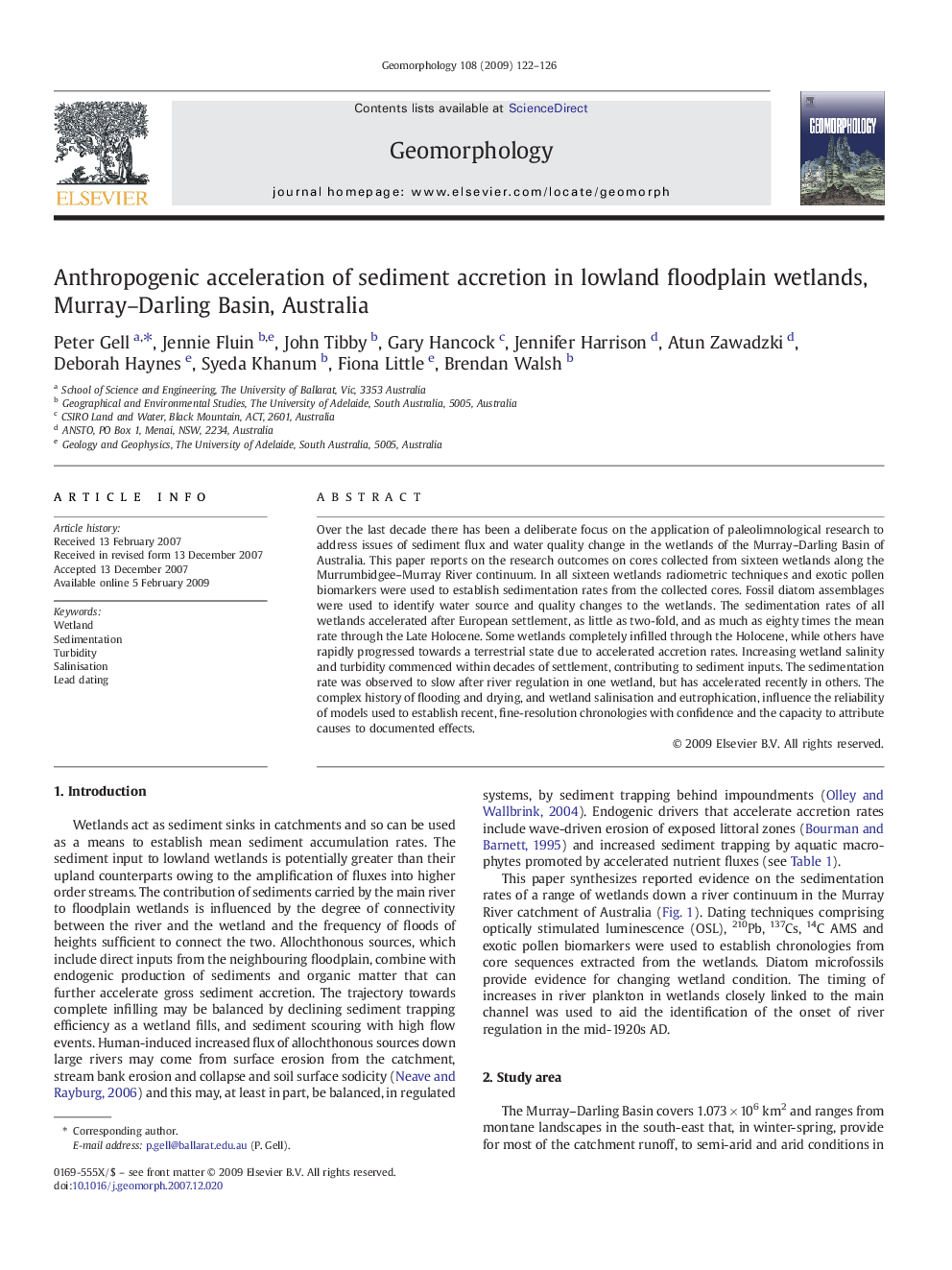| Article ID | Journal | Published Year | Pages | File Type |
|---|---|---|---|---|
| 4686435 | Geomorphology | 2009 | 5 Pages |
Over the last decade there has been a deliberate focus on the application of paleolimnological research to address issues of sediment flux and water quality change in the wetlands of the Murray–Darling Basin of Australia. This paper reports on the research outcomes on cores collected from sixteen wetlands along the Murrumbidgee–Murray River continuum. In all sixteen wetlands radiometric techniques and exotic pollen biomarkers were used to establish sedimentation rates from the collected cores. Fossil diatom assemblages were used to identify water source and quality changes to the wetlands. The sedimentation rates of all wetlands accelerated after European settlement, as little as two-fold, and as much as eighty times the mean rate through the Late Holocene. Some wetlands completely infilled through the Holocene, while others have rapidly progressed towards a terrestrial state due to accelerated accretion rates. Increasing wetland salinity and turbidity commenced within decades of settlement, contributing to sediment inputs. The sedimentation rate was observed to slow after river regulation in one wetland, but has accelerated recently in others. The complex history of flooding and drying, and wetland salinisation and eutrophication, influence the reliability of models used to establish recent, fine-resolution chronologies with confidence and the capacity to attribute causes to documented effects.
